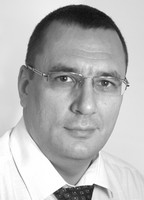Heart contractive activity specificsin speed endurance building process
Фотографии:
ˑ:
Teoriya i praktika fizicheskoy kultury №5 2017, pp.56-58
PhD, Associate Professor R.R. Abzalov1
Dr.Biol., Associate Professor N.I. Abzalov1
PhD, Associate Professor А.М. Valeev1
Dr.Biol., Professor R.A. Abzalov1
PhD, Associate Professor S.V. Abzalova2
PhD, Associate Professor A.A. Rusakov1
1Kazan (Volga Region) Federal University, Kazan
2Kazan State Power Engineering University, Kazan
The study was designed to explore the heart contractive functionality in the speed endurance building process in the differently skilled racing skiers' training system. The heart contractive functionality was tested using tetrapolar chest rheograms during the test practices dominated by the speed and speed endurance building ones. The tests showed that the progress pace of the movement speed building component decreased and the speed endurance increased with the growing athletic fitness rates. Variations of the heart rates and stroke volumes tested in the racing skiers' muscular training process were less expressed versus the prior study data. This progress was due to a variety of speed-building practices included in the training process to train the skiers for competitive ski sprints. The heart contractive functionality profiling studies in the context of the speed- and speed-endurance-building practices will be given a high priority in the junior athletes’ selection and training system design initiatives.
Keywords: speed qualities, racing skiers, heart rate, stroke volume, heart contractive functionality, muscular training.
References
- Abzalov N.I., Abzalov R.A., Abzalov R.R., Gulyakov A.A., Dubynin S.A. Vzaimosvyaz nasosnoy funktsii serdtsa i skorostnoy vynoslivosti u sportsmenov [Correlation of Heart Pumping Function and Speed Endurance in Athletes]. Teoriya i praktika fiz. kultury, no. 2, 2013, pp. 31-34.
- Bal'sevich V.K. Ontokineziologiya cheloveka [Human ontokinesiology]. Moscow: Teoriya i praktika fiz. kultury, 2000, 275 p.
- Gaynullin R.A., Isaev A.P., Erlikh V.V., Korableva J.B. Regulyatsiya funktsii vneshnego dykhaniya studentov s razlichnoy dvigatelnoy aktivnostyu [Regulation of respiratory function of students with different physical activity levels]. Teoriya i praktika fiz. kultury, 2016, no. 3, pp. 17-19.
- Isaev A.P., Erlikh V.V., Epishev V.V. , Khusainova J.B. Fiziologicheskie, biomekhanicheskie, molekulyarno-kletochnye i teoretiko-metodicheskie osobennosti proektirovaniya uspeshnoy sportivnoy deyatelnosti v vidakh sporta, razvivayushchikh vynoslivost [Physiological, biomechanical, cellular and molecular theoretical and methodological features of planning of successful sports activity in endurance sports]. Teoriya i praktika fiz. kultury, 2015, no. 4, pp. 18-20.
- Lubysheva L.I. Sportivnoe vospitanie kak osnova formirovaniya sportivnoy kultury lichnosti [Sports education as basis for sports personality culture building]. Teoriya i praktika fiz. kultury, 2012, no. 6, pp.96-99.
- Aubert A.E., Seps B., Beckers F. Heart rate variability in athletes. Sports Med., 2003, vol. 33, no. 12, pp. 889-919.
- Wilmore J.H. Heart rate and blood pressure changes with endurance training: the HERITAGE Family Study , P.R. Stanforth J. Gagnon, et al. Med. Sci. Sports Exerc., 2001, vol. 33, no. 1, pp. 107-116.




 Журнал "THEORY AND PRACTICE
Журнал "THEORY AND PRACTICE